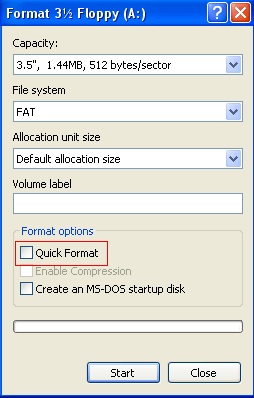
The computer responds by asking you to insert a diskette in drive A: and press the Enter key put the disk in the drive if you haven’t already.įor a 5 1/4-inch disk drive, close the drive’s door latch after inserting the disk. So here continues my book’s directions on how to wade through the formatting process: PCs For Dummies 1st Edition came out three years before Windows 95.

A USB floppy drive is connected to my PC. (B is the second drive.) Believe it or not, if you attach a USB floppy drive to your PC, it appears as Drive A, as shown in Figure 1.įigure 1. Further, the disks were unreliable and bulky.ĭrive A is still around it’s registered by Windows internally as the first floppy drive. The reason is that the commonly available, highest-capacity floppy disk held about 1.4 megabytes. That’s the word FORMAT, followed by a space, then the letter A (for the A: drive) immediately followed by a colon.Ĭomputers no longer use floppies for storage. If you want to format the disk in your A drive, type the following command: Here are some quotes from that book, which believe-it-or-not is still “in print.” So I’m risking the wrath of my publisher’s attorneys, but I’m just that type of person. One whole chapter in that book was devoted to a topic that doesn’t even resonate today: Formatting a floppy disk. PCs For Dummies was my second book in the For Dummies series, co-authored with Andy Rathbone (who went on to write Windows For Dummies and, soon after, retire).


 0 kommentar(er)
0 kommentar(er)
